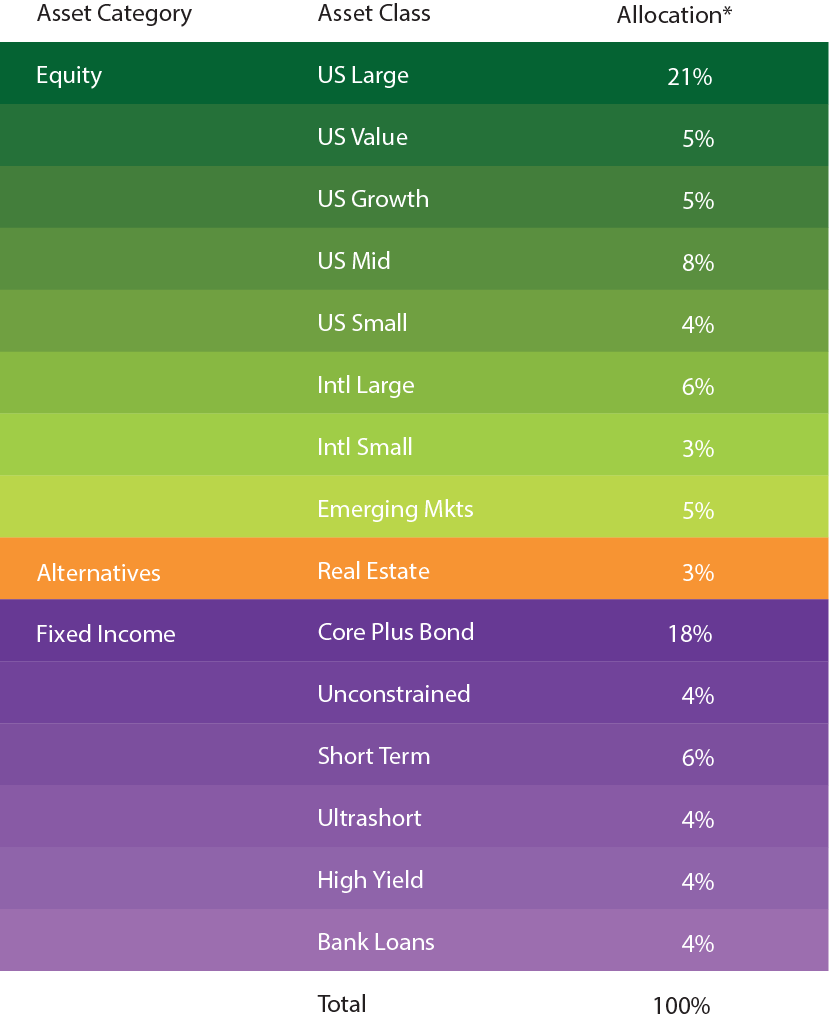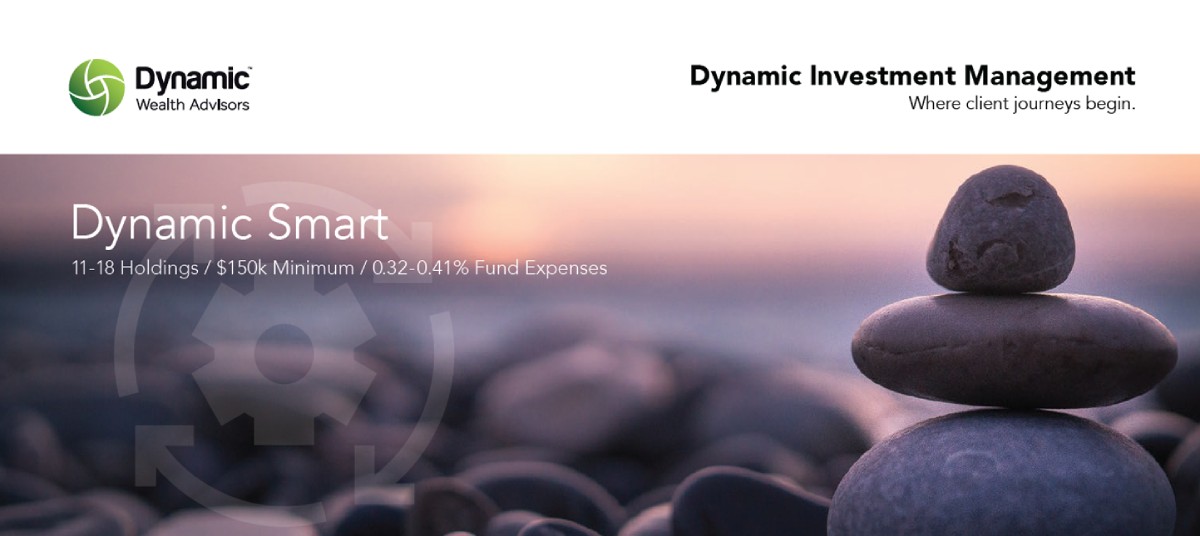We put risk management first in strategically designing global, well diversified, balanced portfolios that are focused on the long-term.
All strategies range from 100% to 30% equity in 10% increments.
Investment Objective
The primary objective of Dynamic Smart is to maximize long-term, risk-adjusted returns while allocating to a broadly diversified variety of asset classes, utilizing ETFs.
Investment Approach
Utilize non-proprietary ETFs to invest in multi-factor (Smart Beta) equity exposures and actively managed fixed income with higher conviction portfolio tilts and more granular asset class exposures.
Asset Class Breakdown 60/40

*For illustrative purposes only. Allocations are subject to change.
Why ETFs?
- Lower cost: ETFs typically offer a significant cost savings relative to mutual funds.
- Tax efficiency: ETFs typically distribute fewer capital gains than mutual funds.
- Transparency: ETFs typically report their holdings daily and track an index, providing stability in exposure and risk.
Why Multi-Factor Equity?
- Academically demonstrated: Academic research has identified key factors that are rewarded with risk-adjusted returns and help explain most alpha generation from active management; they’re often described as an evidence-based investment approach.
- Rules-based approach: Investing-based factors seek to take human emotion and risk out of the equation and focus on the potential long-term benefits of being exposed to key factors (value, size, quality, momentum and minimum volatility).
- Enhanced diversification: While each individual factor works overtime, they flow in cycles. By combining multiple factors, reduced volatility and improved portfolio outcomes can create an “all-weather portfolio.”
Why Actively Managed Fixed Income?
- More complex asset class: There are approximately 4,000 U.S. stocks traded on public exchanges that are typically well researched by analysts. Comparatively, there are more than 17,000 bonds traded in the U.S. “over the counter,” slowly and in large size, with limited information.
- History of outperformance: A relatively low percentage of active equity managers outperform their benchmarks on a consistent basis. Alternatively, active fixed income managers have a proven edge with higher probabilities of outperforming their benchmarks, even after fees.
- More opportunities: The common Bloomberg U.S. Aggregate Bond Index benchmark consists of only three fixed income sectors. Active fixed income managers have access to a wider range of sectors and investment options, offering an opportunity for better diversification and potentially stronger risk-adjusted returns.
There is no guarantee that the model portfolios or any investment strategies will work under all or any market conditions. They may not be appropriate for all investors and each investor should evaluate their ability to invest long-term, especially during periods of a downturn in the market. Past performance is not a guarantee of future returns.
